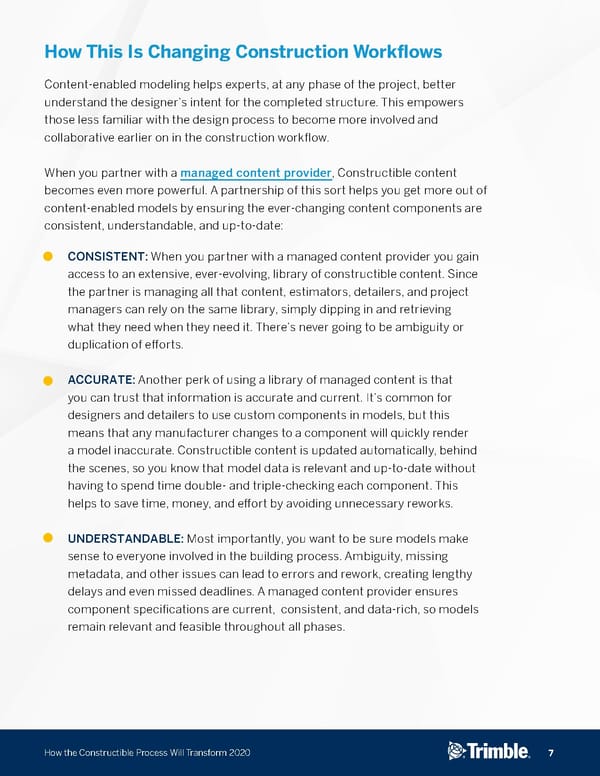How the Constructible Process Will Transform 2020 7 Content-enabled modeling helps experts, at any phase of the project, better understand the designer’s intent for the completed structure. This empowers those less familiar with the design process to become more involved and collaborative earlier on in the construction workflow. When you partner with a managed content provider , Constructible content becomes even more powerful. A partnership of this sort helps you get more out of content-enabled models by ensuring the ever-changing content components are consistent, understandable, and up-to-date: How This Is Changing Construction Workflows CONSISTENT: When you partner with a managed content provider you gain access to an extensive, ever-evolving, library of constructible content. Since the partner is managing all that content, estimators, detailers, and project managers can rely on the same library, simply dipping in and retrieving what they need when they need it. There’s never going to be ambiguity or duplication of efforts. ACCURATE: Another perk of using a library of managed content is that you can trust that information is accurate and current. It’s common for designers and detailers to use custom components in models, but this means that any manufacturer changes to a component will quickly render a model inaccurate. Constructible content is updated automatically, behind the scenes, so you know that model data is relevant and up-to-date without having to spend time double- and triple-checking each component. This helps to save time, money, and effort by avoiding unnecessary reworks. UNDERSTANDABLE: Most importantly, you want to be sure models make sense to everyone involved in the building process. Ambiguity, missing metadata, and other issues can lead to errors and rework, creating lengthy delays and even missed deadlines. A managed content provider ensures component specifications are current, consistent, and data-rich, so models remain relevant and feasible throughout all phases.
 Constructible Process Page 6 Page 8
Constructible Process Page 6 Page 8